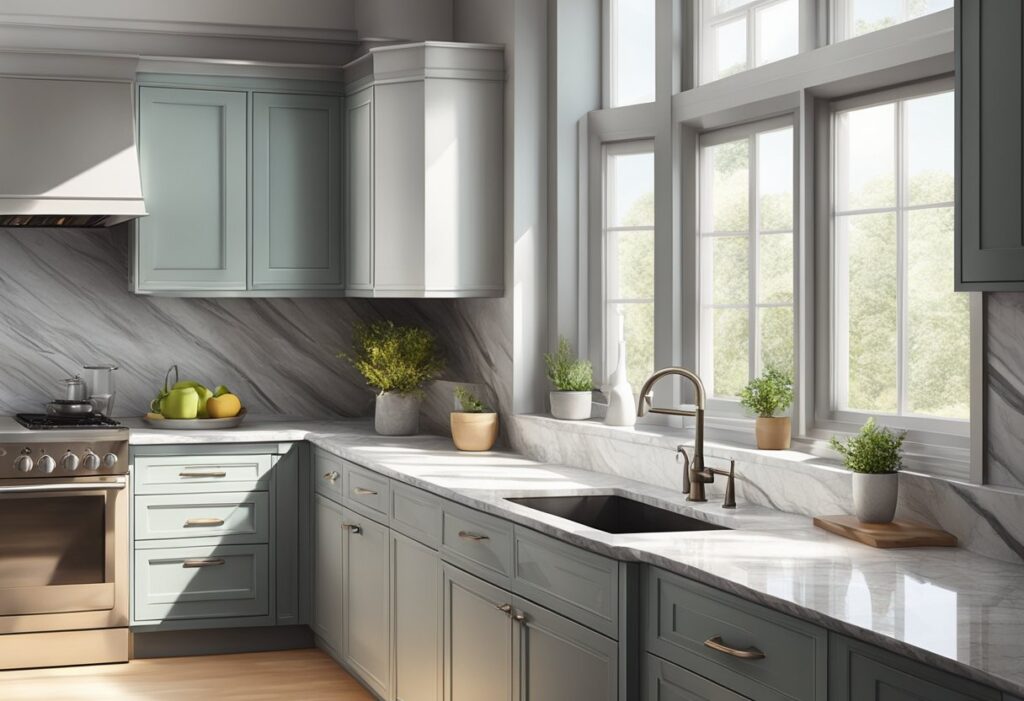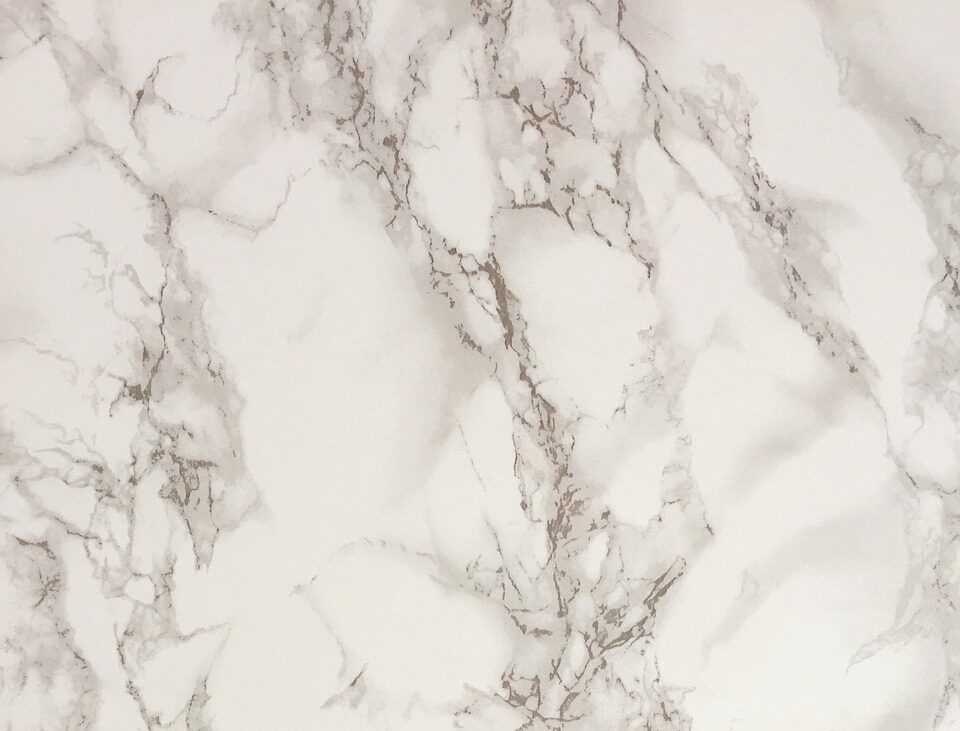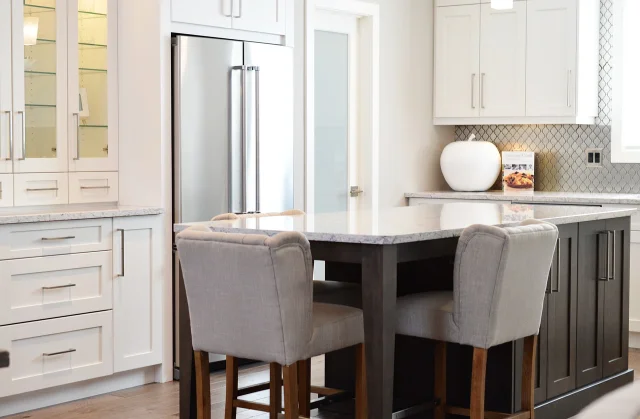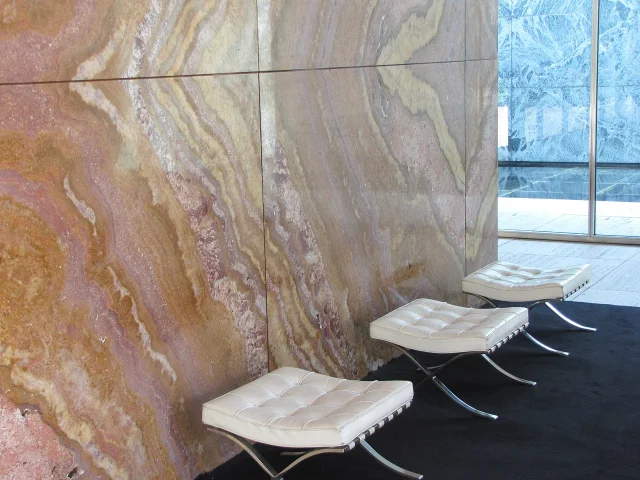Marble vs granite countertops: choosing the right material for the kitchen and bathroom is a significant decision for homeowners looking to enhance both the functionality and aesthetics of their spaces. Marble and granite, being natural stone materials, are popular choices known for their durability and timeless appeal. They differ, however, in their physical and chemical properties, which influence their appearance, maintenance requirements, and longevity.

When considering marble countertops, elegance and classic beauty often come to mind. Marble’s distinct veining and softer look command a certain luxe appeal but require careful maintenance to prevent staining and etching. Conversely, granite countertops are celebrated for their hardiness and a broad spectrum of color and pattern variations, making them a versatile option for various design styles. Both types of stone add value to a home, but the decision between marble and granite often comes down to individual style preference, usage patterns, and budget.
Contents
Key Takeaways
- Marble offers a classic elegance but requires more maintenance.
- Granite provides durability and a wide range of design options.
- Both stone types can increase a home’s value and are suitable for kitchens and bathrooms.
Comparing Marble and Granite

Marble and granite are both prestigious materials commonly used for countertops, each originating from natural stone but possessing unique aesthetic qualities and color patterns.
Material Origin
Marble is a metamorphic rock that forms when limestone is subjected to high pressure and temperature, resulting in its characteristic veining. Granite, on the other hand, is an igneous rock composed of grains of compressed quartz, feldspar, mica, and similar materials, making it exceptionally sturdy.
Aesthetic Differences
Marble is often associated with an elegant and sophisticated appearance due to its polished finish and distinctive veining. Each slab is unique, contributing to its exclusive look. Granite offers a more natural stone appearance, with a granular and speckled pattern that many find incredibly appealing.
Color and Pattern Variations
- Marble: Typically found in shades ranging from white to black, including hues like pink and green, it’s known for its soft veining patterns that range from subtle to more pronounced.
- Granite: Boasts a wider spectrum of colors and styles, from earthy tones to blues, greens, and reds, characterized by visible flecks and veins that create a complex beauty. These variations ensure that each granite piece is unique with its rich array of hues and patterns.
Physical and Chemical Properties

Each rock’s physical and chemical properties play a significant role in their performance in various environments. Characteristics such as durability, surface porosity, and reaction to heat and acid are critical factors affecting their longevity and maintenance.
Durability Factors
Marble is a metamorphic rock consisting primarily of recrystallized carbonate minerals, mostly calcite or dolomite. It is visually striking but less durable than granite due to its softer nature. Granite, an igneous rock, is composed of quartz, mica, feldspar, and other materials, making it more resilient to scratching and chipping. Granite ranks 6 to 7 on the Mohs scale, indicating that its durability generally outperforms that of marble. The Mohs scale is a hardness scale that ranges from 1 to 10, softest to hardest material.
Surface Porosity
The surface porosity of a material determines its ability to absorb liquids, which can lead to staining. Granite surfaces are less porous than marble, requiring less frequent sealing to resist stains. Marble’s more porous surface means it can stain more easily when exposed to spillages, especially from acidic substances, unless it is properly and regularly sealed.
Reaction to Heat and Acid
Granite countertops are noted for their excellent heat resistance, which enables them to withstand high temperatures without being damaged. Conversely, marble can be susceptible to heat and is prone to damage or discoloration due to high temperatures. Both materials can react to acidic substances; however, marble is particularly sensitive, with acidic spills like lemon juice or vinegar potentially causing etching on the surface. It is advised to clean any acidic spills promptly and use cutting boards and trivets to protect the stone’s integrity.
Maintenance and Care

Proper maintenance and care of marble and granite countertops are paramount to ensure their longevity and preserve their beauty. Each material requires specific care, which largely revolves around routine cleaning, timely sealing to prevent stains, and addressing any surface damage, such as scratches and chips, to maintain their pristine condition.
Routine Cleaning Guidelines
For daily cleaning, it is recommended to use a soft cloth and a mild detergent or a cleaner specifically designed for stone countertops. One should avoid acidic or abrasive cleaners on marble to prevent etching. For granite, routine cleaning can prevent the buildup of grime and debris, which could compromise the sealant over time.
- Marble: Use warm water and pH-neutral soap; dry with a soft cloth.
- Granite: Wipe down with a stone cleaner or a solution of water and mild dish soap.
Sealing and Preventing Stains
Both marble and granite countertops should be properly sealed to protect against stains. Marble is more porous and prone to staining, especially from oil and acidic substances, and thus may require more frequent sealing. Granite is denser but still benefits from being sealed to prevent oil and other staining agents from penetrating the surface.
- Marble: Seal every 3-6 months or as needed.
- Granite: Resealing is usually required once a year; check by dripping water on the surface to see if it beads.
Dealing with Scratches and Chips
Marble may scratch more easily than granite; however, minor scratches can be buffed out using fine-grit sandpaper. Chips in granite are less common but can be filled in with a color-matched epoxy or resin. For both materials, larger cracks or chips should be professionally repaired.
- Marble: Use fine-grit sandpaper gently to remove minor scratches.
- Granite: For chipping, apply color-matched epoxy and polish to restore luster.
Installation and Cost Considerations

Choosing between marble and granite countertops involves evaluating the installation process and the associated costs. One should also consider the long-term value each material provides, balancing initial investments with durability and potential resale value.
Countertop Installation Process
The installation process for both granite and marble countertops requires a high degree of precision and expertise. Though the steps in the installation are similar—measuring, cutting, sealing, and mounting—the materials’ specific characteristics may affect the duration and complexity of the job. For instance, marble may necessitate extra care to prevent chipping during installation.
- Measure space for accuracy
- Cut material to precise dimensions
- Seal if necessary to protect the surface
- Mount countertop securely
Price Comparison
Costs can vary widely between marble and granite, typically influenced by factors such as material quality, color, and origin. On average, marble is often priced higher than granite due to its perceived luxury and aesthetic qualities.
- Granite: Starting around $35 to $75 per square foot installed.
- Marble: Generally starts at $60 per square foot and can exceed $200 per square foot encompassing a range of factors.
Long-Term Value
When evaluating long-term value, granite countertops are often seen as a more durable and cost-effective choice over the long run. They are less prone to staining, chipping, and scratching, potentially lasting more than 100 years, while marble requires more maintenance and may need replacement after 20 to 50 years.
- Granite: Durable, less maintenance, over 100 years lifespan
- Marble: Higher maintenance, 20-50 years lifespan
The resale value can also be a consideration; kitchens with granite may appeal to buyers who prioritize ease of maintenance, while marble might attract those seeking a luxurious aesthetic.
Design and Style Implications

Choosing between marble and granite countertops goes beyond mere cost and durability considerations; it’s about making a style statement that complements the kitchen or bathroom. Each material offers unique aesthetic advantages that can define the space’s character.
Matching Countertops to Your Space
When integrating a kitchen countertop or bathroom countertop, harmony with the existing design elements is crucial. Marble is renowned for its luxury and timeless appeal, well-suited for traditional and classic motifs. Its soft veins and subtle color variations impart an air of elegance. In contrast, granite countertops bring a bold and natural look that can adapt to various styles, from rustic to contemporary settings.
- Marble: Ideal for creating a high-end, sophisticated atmosphere.
- Granite: Offers a more casual or modern feel, depending on the chosen pattern and color.
Influencing Factors on Style Choices
Several factors influence style decisions when selecting countertops:
- Backsplashes: The choice between marble and granite can affect the type of backsplash that complements the countertops. While marble can be effortlessly paired with a similar marble backsplash for a seamless look, granite often pairs well with simpler tile patterns that accentuate its natural stone appearance.
- Edges: The edge style of the countertop can carry significant weight in the overall look—be it beveled, rounded, or a simple straight cut. Granite tends to be more forgiving with a variety of edge designs due to its granular patterns, whereas marble’s veining might benefit from a more refined edge to highlight its sophistication.
Style Selection:
- Granite:
- Pros:
- Varied colors and styles.
- Robust look suitable for many kitchen styles.
- Cons:
- Can be overwhelming if not paired correctly with cabinetry and flooring.
- Pros:
- Marble:
- Pros:
- Luxurious and classic appeal, commonly found in traditional kitchens.
- Works well with both modern and antique fixtures.
- Cons:
- Requires a deliberate design approach to match its distinct veining with other kitchen elements.
- Pros:
When homeowners consider the design implications of their countertop choices, they should take into account how these factors will integrate with their existing or planned color schemes and fixtures to create a cohesive and appealing space.
Considerations Beyond the Kitchen and Bathroom

When exploring countertop materials, marble and granite offer versatility that extends beyond their traditional use in kitchens and bathrooms. They are frequently incorporated into designs throughout residential and commercial spaces for their durability and aesthetic appeal.
Other Applications for Marble and Granite
Marble
Marble is often associated with luxury and is a common choice for formal dining room tables, reception desks, and fireplace surrounds. Its unique veining and timeless elegance make it a popular selection for spaces that are designed to impress. However, its more demanding maintenance requirements make it less ideal for high-traffic areas.
- Fireplace Surrounds: Marble adds sophistication to living spaces.
- Reception Desks: The stone’s distinctiveness conveys a premium feel.
Granite
Granite’s resilience to scratching and heat damage lends itself well to uses in outdoor living spaces such as patio tables or garden benches. It also performs well in heavy-use areas like commercial bars or as transaction counters where durability is key.
- Patio Tables: Highly resistant to weather conditions.
- Commercial Bars: Withstands the rigors of heavy use without showing wear easily.
Tile
Both marble and granite can be cut into tiles for flooring or wall cladding, creating a cohesive look that can flow from one room to another. Granite tiles are particularly valued in entryways or as backsplashes where resilience is paramount, while marble tiles can add a touch of luxury to a foyer or corporate lobby.
- Flooring: Both marble and granite tiles can create stunning floors.
- Wall Cladding: These materials are extensively used for their visual impact and longevity.
In all these cases, selecting the right countertop material—whether it’s marble or granite—depends on the desired aesthetic, the expected level of use, and the willingness to maintain the surface to keep it looking its best over time.
Environmental and Health Aspects

When considering environmental and health aspects of countertops, one should examine the sustainability of the materials and the safety of maintenance practices. These aspects influence not only the ecological footprint but also the well-being of those who use the kitchen space.
Natural Stone Sustainability
Natural stones, such as marble and granite, are lauded for their durability and low maintenance needs. However, the environmental impact of quarrying these materials cannot be overlooked. On the sustainability front, granite often requires less energy for production compared to other materials like laminate, due to its availability and the straightforward nature of its extraction. Marble, while being a natural stone, demands more intensive quarrying processes, often involving significant water usage. Limestone, from which marble originates, is both abundant and durable, making marble a long-lasting choice — yet its extraction can be resource-intensive.
Safe Cleaning Practices
The maintenance of marble and granite impacts both longevity and health. These materials are often touted for their low-maintenance nature; however, they interact differently with various substances. For instance, acidic liquids like lemon juice can etch marble, making it more vulnerable than granite. To ensure safe cleaning, one should use pH-neutral cleaners and promptly wipe up any liquids, especially water, to prevent penetration and potential damage to the natural stone. Using harsh chemicals or abrasive cleaning tools can not only damage the stone but also pose health risks due to the release of harmful particles or residues. Therefore, adhering to recommended cleaning practices ensures the longevity of the countertops and safeguards household health.
Common Questions Addressed

When choosing between marble and granite countertops, homeowners often consider durability, appearance, and maintenance. The following subsections discuss common concerns regarding these materials in specific situations.
Marble vs. Granite in High Traffic Areas
Marble is cherished for its elegant veining and timeless appearance, but it may not be the ideal choice for high traffic areas in the kitchen. It can show wear more easily due to its susceptibility to etching and scratching. In contrast, granite, known for its hardiness, is less likely to suffer damage in bustling spaces. The material’s resilience means that heavy usage is less likely to impact its surface integrity.
Impact of Frequent Cooking on Countertops
Frequent cooking can expose countertops to a range of potentially damaging factors, such as hot pots and spills. Granite countertops are highly resistant to heat, making them a safe bet for kitchens with heavy culinary use. Marble, although also heat-resistant, is prone to discoloration and staining if not immediately cleaned after spills. Both materials should be professionally installed to ensure that seams are properly sealed.
Choosing Between Marble and Granite for Remodeling
Deciding between marble and granite for a remodeling project often boils down to aesthetics and budget. Marble offers a one-of-a-kind pattern with hues that can range from white to black, including shades of gray, blue, and pink. Granite, alternatively, presents a more varied appearance with flecks of minerals that can include quartz. When it comes to cost, as already exposed, granite is generally less expensive, typically ranging from $75 to $100 per square foot installed, while marble starts at approximately $100 per square foot.
Selecting the right material ensures that the kitchen not only reflects personal style but also accommodates the practical demands of home life.


